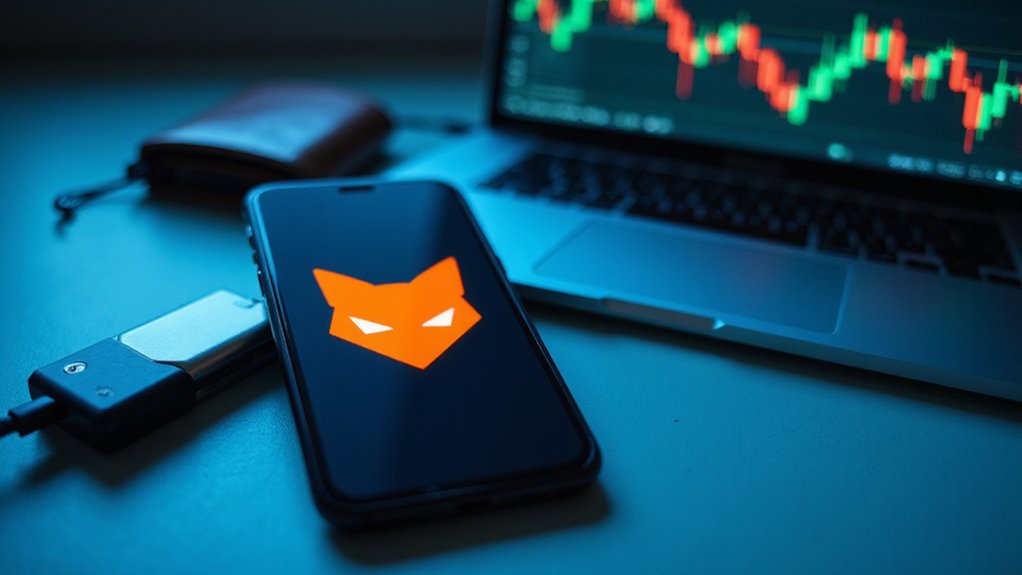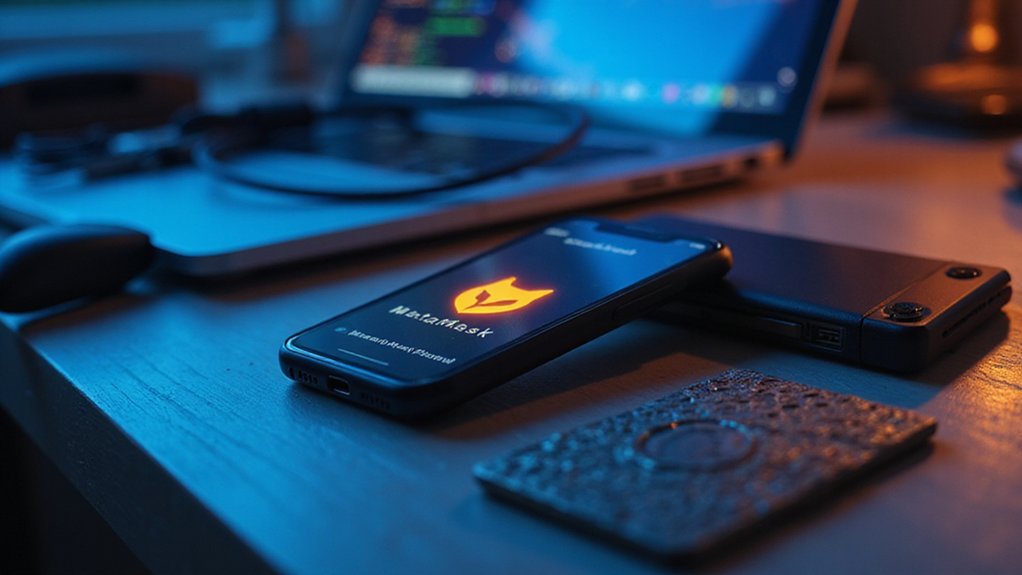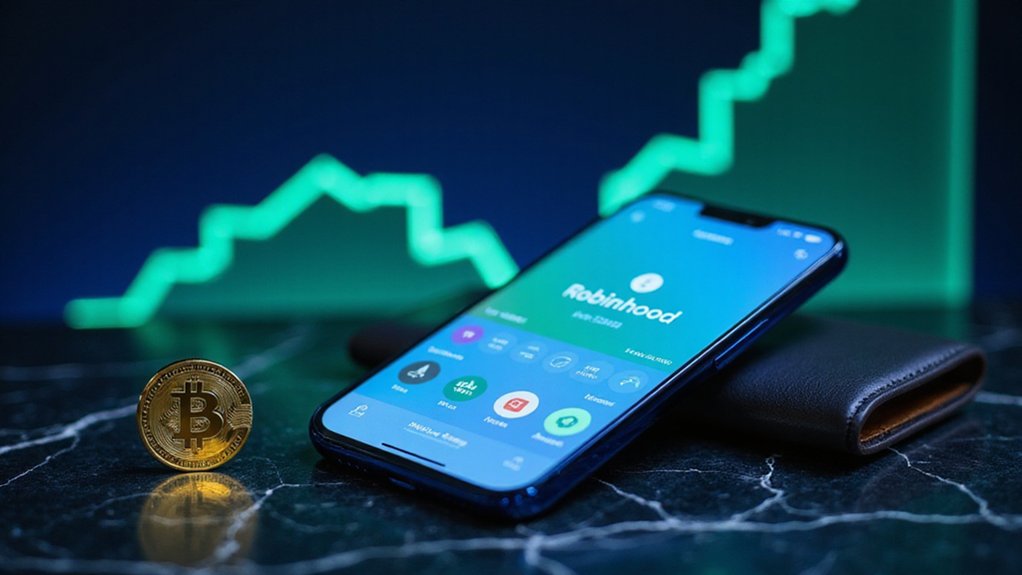MetaMask serves as the quintessential on-ramp to Web3, requiring mere minutes to set up through official channels. Users create a wallet, secure a seed phrase (treat this 12-word combination like the nuclear codes it fundamentally is), and establish a password. The interface permits sending, receiving, and swapping tokens while facilitating dApp interactions—all with self-custodial sovereignty. This browser extension cum mobile app combination represents the philosophical cornerstone of cryptocurrency: control without compromise.

Why has MetaMask emerged as the quintessential gateway to Web3 for millions of crypto enthusiasts?
The answer lies in its elegant fusion of accessibility and control—a free, open-source solution that grants users full custody of their digital assets while simplifying blockchain interactions (a rare combination in an industry often characterized by unnecessary complexity).
MetaMask functions primarily as a self-custodial wallet available both as a browser extension and mobile application, supporting Ethereum and various EVM-compatible networks.
Unlike centralized exchanges where third parties maintain control of private keys, MetaMask users retain complete sovereignty over their assets through possession of their seed phrase—that sacred string of 12 words representing the cryptographic skeleton key to one’s digital wealth.¹
Installation proves remarkably straightforward: users can download MetaMask from official channels, create a new wallet (or import an existing one), and secure their account with a robust password.
The wallet generates a seed phrase which must be documented and stored with paranoid diligence—lose this phrase and one’s assets vanish into the cryptographic ether, potentially irretrievable.
Once configured, MetaMask transforms the cryptocurrency experience through its intuitive interface.
Users can send and receive assets, swap between tokens, bridge across blockchain networks, and—perhaps most importantly—interact with decentralized applications through direct wallet connections.
This DApp connectivity represents MetaMask’s most transformative feature, enabling participation in decentralized finance protocols without surrendering asset custody.
As a non-custodial wallet, MetaMask exemplifies the core Web3 philosophy of giving users complete control over their private keys and digital identity.
Security remains paramount in MetaMask’s architecture, anchored by its open-source transparency and self-custodial design.
The wallet employs transaction confirmations when interacting with DApps, requiring explicit user authorization for any on-chain activities—a critical safeguard in Web3’s occasionally treacherous landscape.
For neophytes entering cryptocurrency’s byzantine domain, MetaMask offers a remarkably intuitive portal to blockchain functionality without sacrificing security fundamentals.
Its widespread adoption speaks to a delicate balance achieved: sophisticated enough for veterans while remaining navigable for newcomers—precisely the combination necessary for broader blockchain adoption.
¹Memorizing this phrase represents crypto’s peculiar version of financial responsibility.
Frequently Asked Questions
What Is the Difference Between Hot and Cold Wallets?
Hot wallets maintain private keys online, offering convenience for frequent transactions but exposing users to potential hacking risks (a trade-off many seem surprisingly comfortable with).
Cold wallets, conversely, store keys offline on physical devices, providing superior security for larger cryptocurrency holdings at the cost of accessibility.
This security-convenience spectrum explains why experienced crypto enthusiasts often employ both: hot wallets for day-to-day transactions, cold storage for their significant assets—a pragmatic dual approach to digital asset management.
How Secure Is Metamask Compared to Hardware Wallets?
MetaMask, while convenient, fundamentally offers less security than hardware wallets due to its persistent internet exposure.
Hardware wallets—those deliberately offline bastions of cryptographic integrity—keep private keys physically isolated from malware and phishing threats that routinely plague software wallets.
The security calculus is straightforward: MetaMask stores encrypted keys on internet-connected devices (inviting trouble), whereas hardware wallets require physical confirmation for transactions, creating a tangible barrier against remote exploitation that no software solution can match.
Can I Recover My Metamask Wallet Without the Seed Phrase?
Recovering a MetaMask wallet without the seed phrase presents a sobering reality—it’s fundamentally impossible through official channels.
The architecture of cryptocurrency wallets, built on security-first principles, renders the seed phrase indispensable.
While password recovery might be possible for locked wallets where access still exists, a completely lost seed phrase represents a point of no return.
This immutable fact serves as crypto’s harshest lesson in personal responsibility (and perhaps its most expensive one).
How Do Metamask Gas Fees Work?
MetaMask gas fees comprise a base fee (burned to manage network congestion) and a priority fee (paid to validators as incentive).
The total cost equals (base fee + priority fee) × gas units used.
Users can select preset options (low, market, aggressive) or customize fees to balance transaction speed against cost.
MetaMask’s Gas Station feature even permits transactions using alternative assets like USDC or DAI—rather convenient for those caught without ETH during market volatility.
Can I Connect Metamask to Multiple Blockchain Networks Simultaneously?
MetaMask allows users to add multiple blockchain networks but doesn’t support simultaneous connections—a limitation that seems rather quaint in today’s multi-chain ecosystem.
Users can effortlessly switch between networks via the dropdown menu, accessing different ecosystems with their single wallet.
This architectural design (while not truly simultaneous) effectively provides fluid navigation between Ethereum, Polygon, Binance Smart Chain, and various other EVM-compatible networks, obviating the need for multiple wallet installations.









